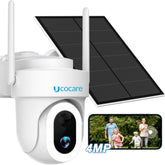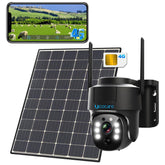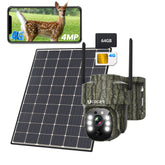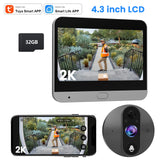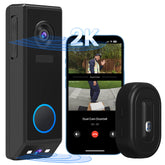Can indoor security cameras be used outdoors?
Can indoor security cameras be used outdoors?
Using an indoor security camera outdoors is generally not recommended, as most indoor cameras are not designed to withstand outdoor elements such as rain, snow, and extreme temperatures. Indoor cameras typically lack the necessary weatherproofing and durability needed to function properly outside.
The main difference between indoor and outdoor security cameras is based on one factor: weather-resistance. While indoor and outdoor cameras tend to look similar with compatible features.
Outdoor security cameras are specifically built to handle varying weather conditions and are designed with features such as weather resistance, durable casing, and sometimes infrared night vision for outdoor use. They often have an Ingress Protection (IP) rating to indicate their resistance to dust and water.
Here are some key differences between indoor and outdoor security cameras:
1.Weather Resistance:
Indoor Cameras:
These cameras are not built to withstand exposure to the elements. They are designed for use in controlled environments where they won't be exposed to rain, snow, or extreme temperatures.
Outdoor Cameras:
Outdoor cameras are weatherproof and built to handle various weather conditions. They often come with an Ingress Protection (IP) rating indicating their resistance to dust and water.

2.Construction and Durability:
Indoor Cameras:
Typically have a more lightweight and compact design, focusing on aesthetics and blending into indoor environments.
Outdoor Cameras:
Built with a more robust and durable construction to withstand outdoor conditions. They often have a tougher casing to protect against vandalism and tampering.
3.Night Vision:
Indoor Cameras:
Often have basic or no night vision capabilities, as they are designed for well-lit indoor environments.
Outdoor Cameras:
Equipped with infrared (IR) or other advanced night vision technologies to capture clear images in low-light or dark outdoor conditions.
4.Field of View:
Indoor Cameras:
Typically have a narrower field of view, as they are meant to cover smaller indoor spaces.
Outdoor Cameras:
Often have a wider field of view to cover larger outdoor areas.
5.Connectivity:
Indoor Cameras:
May rely on Wi-Fi connectivity and may not have as robust a connection as outdoor cameras.
Outdoor Cameras:
Often designed with more robust connectivity options, including wired connections like Power over Ethernet (PoE) for a stable connection.
6.Installation Location:
Indoor Cameras:
Typically mounted on walls or ceilings indoors.

Outdoor Cameras:
Designed for exterior mounting and may come with adjustable mounting brackets to accommodate different installation scenarios.
If you need surveillance for both indoor and outdoor areas, it's advisable to invest in cameras specifically designed for outdoor use. Using an indoor camera outdoors may lead to damage, malfunctions, and a shortened lifespan due to exposure to the elements.

